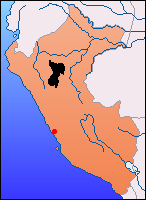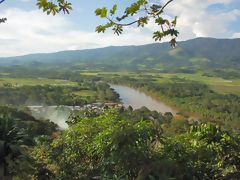 |
Related pages: |
 Moyobamba, the capital of the department of San Martín, stands out for its history. It was the first city in Peru to be founded in the lowland rainforest shortly after the Spanish conquest. Moyobamba played a key role in the development of the region, quickly becoming a hub for colonization and religious dissemination.
Moyobamba, the capital of the department of San Martín, stands out for its history. It was the first city in Peru to be founded in the lowland rainforest shortly after the Spanish conquest. Moyobamba played a key role in the development of the region, quickly becoming a hub for colonization and religious dissemination.
Shortly after its foundation, Moyobamba became the seat of the first missionary religious orders established in the area. These missionaries aimed to convert local populations and expand the influence of the Catholic Church. Moyobamba and its surrounding areas became the spearhead of this evangelization effort, which later played a fundamental role in the colonization and development of this resource-rich region.
The department of San Martín was officially created on September 14, 1906. Its economic development was greatly aided by the opening of the Marginal road, a crucial route connecting this remote region to the rest of the country. Before that, the Huallaga River played an equally important role in transportation and trade. Together with its main tributaries, such as the Mayo, Huallabamba, Saposoa, Chazutayacu, Yuracyacu, Biavo, and Ponaza, the river forms a vast hydrographic system that is vital for agriculture and the region's economy.
Today, Moyobamba is known for its biodiversity, located in an area rich in flora and fauna. The city is also known as the "City of Orchids" because of the vast variety of orchids that grow there. Each year, the city hosts the Orchid Festival, attracting numerous visitors who come to admire these exotic flowers and discover local traditions. Moyobamba is also a cultural center where Spanish and indigenous influences have blended to create a unique identity.
With its rich historical past, role in religious colonization, and exceptional natural environment, Moyobamba is a must-visit destination for those looking to explore a different aspect of Peru. Whether you are interested in history, nature, or culture, this city offers an enriching experience in the heart of the Amazon rainforest.